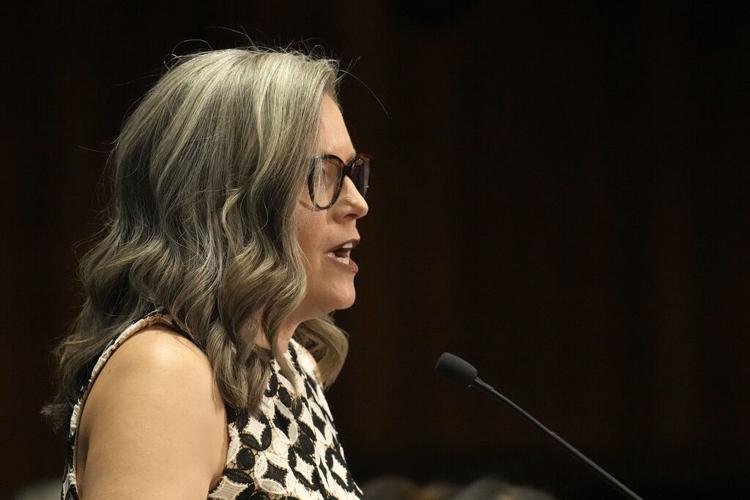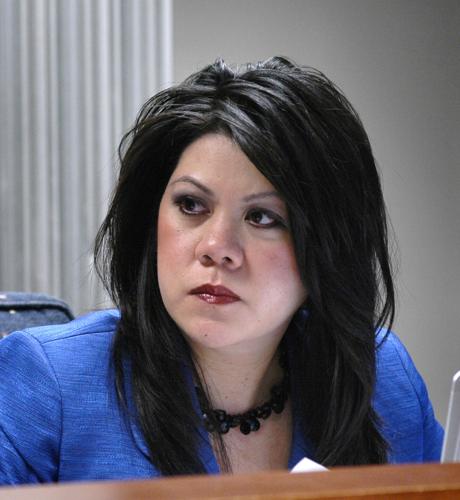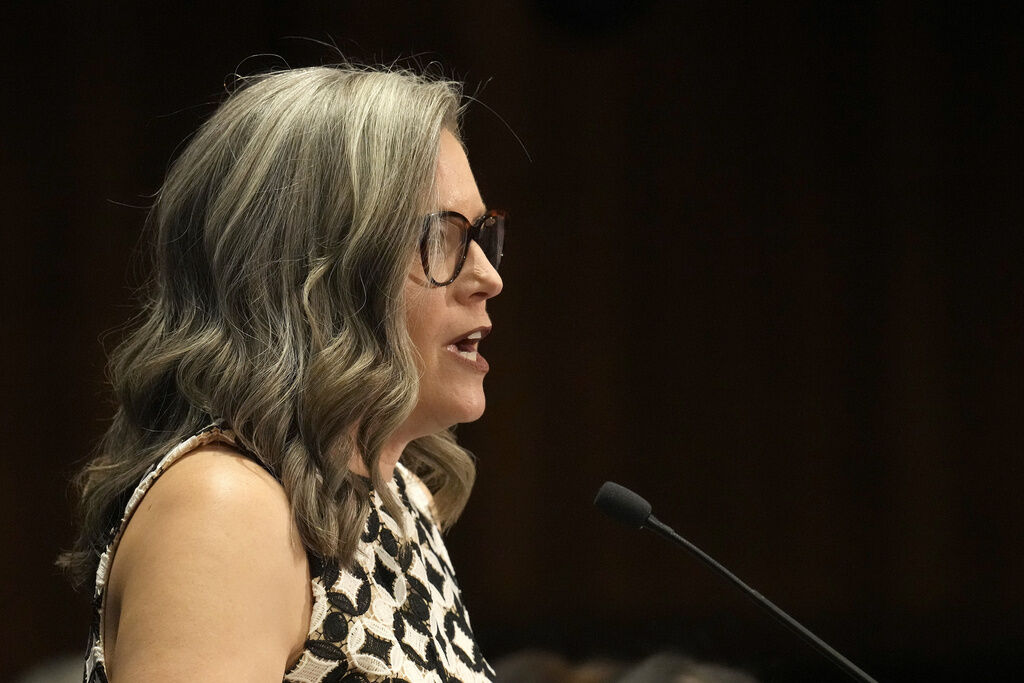PHOENIX — Gov. Katie Hobbs insists her plan to take 8.9% out of the state land trust every year to boost education funding won’t harm the account.
In a study released Monday, Hobbs claims her plan will be able to produce an extra $1.3 billion over the next decade. Most of that would go to pay hikes for teachers and others considered “educators,’’ with schools getting an extra $350 million to divide up as they want.
But the governor’s own numbers suggest she is actually dipping into the body of the trust.
On paper, Hobbs says the fund, projected to be $7.9 billion in 2025 when her proposal would take effect, would reach $8.9 billion a decade later.
Only thing is, that $8.9 billion number includes the governor’s estimate that the Arizona Land Department will take in about $200 million a year from the sale and lease of the approximately 9.2 million acres under its control.
What that means is that, all else being equal, that $7.9 billion should automatically grow to $9.9 billion on its own.
Put another way, by removing as much as Hobbs wants, the trust fund would be worth less by 2035 than it would otherwise.
Spending is justified, Hobbs says
Hobbs brushed aside questions Monday about the finances of her plan, calling her estimates “conservative.’’
“Our proposal is based on the last 10 years of Prop. 123,’’ she said, including how the trust has performed under the existing 2016 law (created by Prop. 123) that takes 6.9% out every year. “And the trust is healthy and strong and will continue to be under this proposal.’’
Nor was she concerned about the fact the trust would grow even more without her 8.9% plan.
“We’re not losing money,’’ Hobbs said. Whatever the numbers, the spending is justified, she added.
“This is a critical investment that invests in our schools,’’ the Democratic governor said. “I think there’s agreement across the board that we need that. And this is a way to do that that doesn’t hurt the trust and gets schools the resources they desperately need.
Moreover, “It does all of this without raising taxes by one cent,’’ Hobbs said.
“Our estimates are conservative across the board,’’ the governor said.
Treasurer disagrees
But Hobbs’ accounting has drawn the ire of Republican State Treasurer Kimberly Yee.
Yee said that, based on both past performance of the fund and future projections, the maximum that should be taken out annually should be 5.45%.
Even Hobbs’ proposal presumes the investment returns on the land trust would grow just 7.24% a year, less than the 8.9% her plan seeks to remove.

Arizona Treasurer Kimberly Yee
Yee also said the trust hit that 7.24% only 60% of the time.
“The governor’s recommendation of an 8.9% payout is completely unrealistic as we have not reported a 10-year return above 8.9% in two years,’’ the treasurer said.
“We just respectfully disagree with her,’’ Hobbs responded.
It’s not just the governor’s plan that has gotten Yee’s attention.
She said even a competing plan from Republicans who control the Legislature, one designed to provide a flat $4,000 raise for teachers, is also too generous. It would rely on continuing to take 6.9% out of the trust balance each year.
Comparison to GOP plan
There are some similarities between the plans.
Hobbs said her proposal sets aside about $350 million a year, close to the same amount of money for educator pay as is in the GOP legislative plan for teachers.
But the difference is Republican lawmakers would limit pay hikes only to teachers, saying that should provide each about $4,000 more, raising salaries an average of 7%.
By contrast, Hobbs would also divide up those dollars among librarians, nurses, counselors, social workers, speech therapists, coaches and psychologists.
Her staff said they did not know how much that would mean, on average, to those eligible. But unlike the Republican plan, schools would not be told how to divide up that cash among those who are eligible.
“The governor believes community schools are best suited to determine the proper amounts versus a top-down mandate,’’ said Hobbs’ press aide Christian Slater.
Beyond that, the reason Hobbs’ overall proposal is more expensive than the GOP plan is she wants another about $120 million a year for pay and other compensation for schools’ other “support services’’ staff, ranging from classroom aides and media specialists to bus drivers and lunchroom personnel. That also is something that Republicans are not proposing.
Rep. Judy Schwiebert, D-Phoenix, said adding all those people into the plan is justified.
She compared raising teacher salaries to putting a new engine in a car.
“But, you know, like the cars we all depend on, our schools require many essential parts,’’ she said. “Unless you also invest in some tires, in this case in the form of increased pay for essential classroom aides, reading and math specialists, counselors and all support staff, you’re not going anywhere.’’
Then there’s an extra $40 million a year for school safety and security, also not in the GOP plan.
Gary Zehrbach, a deputy superintendent in the Deer Valley Unified School District, said those funds are necessary to address issues such as access control, threat detection and cameras, as well as to “harden’’ school facilities with ballistic-proof materials.
What’s next
The release of the elements of Hobbs’ plan sets the stage for negotiation, or confrontation, with legislative Republicans.
Yee’s comments aside, GOP leaders have continued to argue their 6.9% plan is financially defensible. They point out it is the amount currently being withdrawn from the land trust, the result of voter approval in 2015 of Proposition 123.
Arizona got 10 million acres of land from the federal government when it became a state. With sales, much of that for commercial development, that leaves about 9.1 million acres.
The proceeds from those sales go into the trust. Under the terms of the Arizona Constitution, schools and other beneficiaries get the interest.
In addition, schools have been able to take 2.5% out of the body of the trust, far less than the annual growth of the investment, which had allowed the trust to accumulate money.
In 2016 voters approved Proposition 123 and its 6.9% withdrawal rate. That gave schools approximately another $350 million a year to use without the state having to raise taxes.
The proposition self-destructs in 2025. The GOP plan would continue the 6.9% withdrawal, but this time with the proceeds earmarked for the teacher raises.
Whether lawmakers are willing to accept some part of the 8.9% plan the governor wants remains unclear.
Under normal legislative circumstances, Hobbs has some negotiating power by virtue of her veto stamp. She can reject anything she finds unacceptable.
That, however, is not the case here. Instead, whatever Republicans decide is their final plan bypasses Hobbs and would go directly on the ballot.
Hobbs said she has not spoken with GOP leaders about the two plans but only with the proponents of what she has proposed.
There is a danger if all involved do not come to an agreement
If Hobbs and Democrats balk at the GOP plan, they could withhold their blessing. That could endanger the measure when it goes to the ballot: The original Proposition 123 pushed by Republican then-Gov. Doug Ducey and the GOP passed by a bare minimum 51% even though it eventually got the support of many in the education community.
If nothing goes to the ballot — and soon — Proposition 123 expires, the schools no longer get more than $300 million a year, and the teachers get no pay raise. That comes as the state loses about 40% of educators within their first four years of teaching, according to Republican state schools chief Tom Horne.
Get your morning recap of today's local news and read the full stories here: tucne.ws/morning






